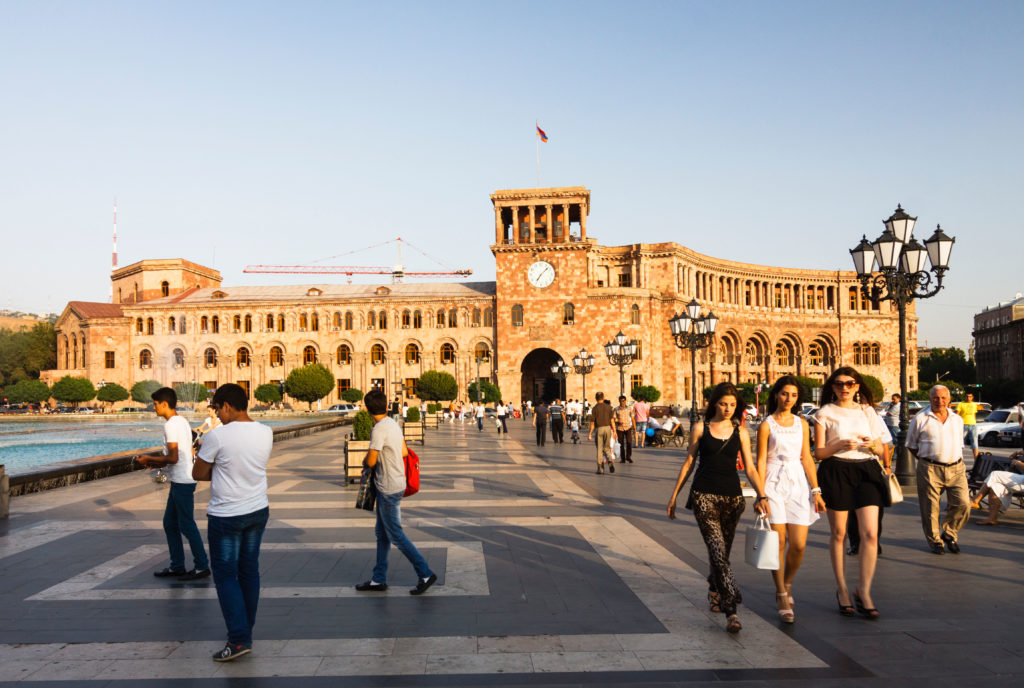YEREVAN
Armenia’s Central Bank raised its key refinancing rate to 7 percent to curb rising inflation, which went beyond the target range in June.
The central bank raised the key refinancing rate by 0.5 percent, the fourth increase since February, when it raised it by 0.25 percent. It kept it unchanged at 5.5 percent in March before raising it again by 0.5 percent in May and by 0.5 percent in June. The lombard repo rate was set at 8.5 percent, and the deposit rate at 5.5 percent.
Consumer prices in Armenia were up 6.5 percent year-on-year in June after 5.9 percent inflation in May. Deflation in June was 0.8 percent compared to a month earlier when the consumer price index declined by 0.4 percent. In January-June, inflation was 5.7 percent year-on-year. Armenia’s government projects annual inflation in a range of 2.5-5.5 percent in 2021. The economic growth projection was revised to 6 percent from 3.2 percent.
Though Armenia reported rapid growth in recent years, a year of restrictions to curb the spread of the COVID-19 and a six-week conflict between Azerbaijan and ethnic Armenian forces over the Nagorno-Karabakh region and surrounding territories have taken their toll on its economy. Armenia’s gross domestic product (GDP) shrank 3.3 percent year-on-year in the first quarter of 2021 as the impact of the coronavirus pandemic and the war over Nagorno-Karabakh dampened prospects of recovery.
Armenia accepted a Russian-brokered ceasefire to end the bloody conflict which secured territorial gains for Azerbaijan. The country’s economy contracted by 7.6 percent in 2020, mainly reflecting a decline in services and trade.
Despite this decline, some sectors still showed growth in January to March this year, including administrative and related activities, which recorded an increase of 7.3 percent, healthcare and social services, which were up 7 percent, construction – up 3.8 percent, water supply and sanitation – up 3.7 percent, and agriculture, forestry and fishing, with an increase of 1.5 percent.
The government predicts economic growth this year of 3.2 percent, though Finance Minister Atom Janjughazyan acknowledged in December that achieving that level of economic growth “would require hard work.”
The country’s Central Bank downgraded its own growth forecast earlier this year to 1.4 percent from 2 percent.
According to the World Bank’s latest forecasts, Armenia’s economy is expected to grow 3.4 percent in 2021 and more strongly in 2022, by 4.3 percent. The World Bank’s current forecast assumes that the shocks from both the pandemic and the conflict will dissipate, tourism recover and consumer and business confidence improve.
The International Monetary Fund (IMF) said in April it expected Armenia’s economy to expand by around 1 percent in 2021 followed by 3.5 percent growth next year, although the recovery will be protracted.

